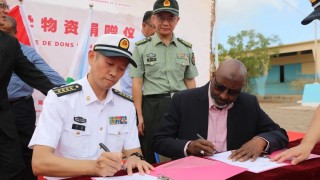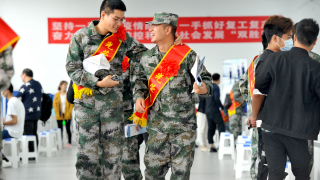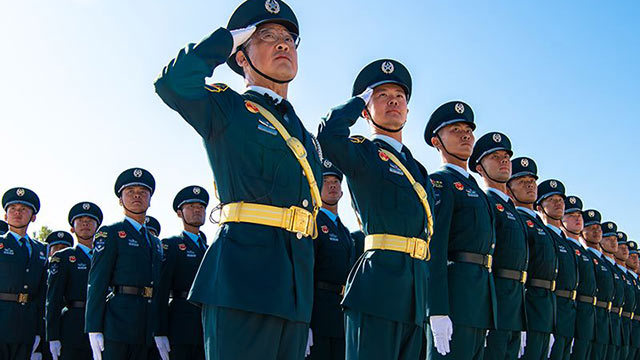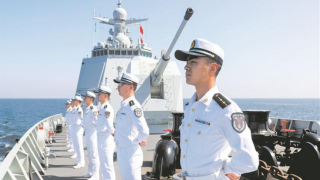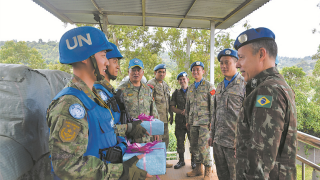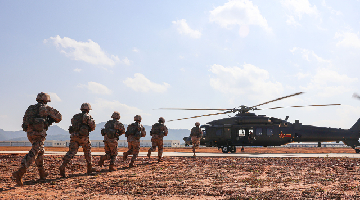By Liu Lin
On the evening of January 31, US Defense Secretary Lloyd Austin arrived in Manila to continue his trip in Asia and met his Philippine counterpart after visiting the Republic of Korea (ROK). This was Austin's second visit to the Philippines after serving as the US Defense Secretary, and the third by the US senior officials after Blinken and Harris within six months.
From the actual results achieved in Austin's visit, it can be concluded that the US side had achieved the desired results to a certain extent. Austin met with Philippine President Ferdinand Marcos Jr., and held talks with leaders of the military and foreign affairs, with many consensuses reached on strengthening the bilateral defense relations.
First of all, as part of the promotion of the Enhanced Defense Cooperation Agreement (EDCA), the Philippine side agreed that the US could build infrastructure in “four new Agreed Locations” in the Philippines as designated. The US Department of Defense released news, saying that "the addition of these new EDCA locations will allow more rapid support for humanitarian and climate-related disasters in the Philippines, and to respond to other shared challenges". However, the US and the Philippines had not disclosed the specific locations; besides, the US would also allocate over 82 million dollars toward infrastructure investment at the five existing bases under the EDCA.
Secondly, the specific military cooperation between the US and the Philippines will be substantially promoted in 2023. The US will continue to help the Philippines improve its military capabilities and strengthen its common defense posture. Pentagon said it has been seeking to increase the complexity of joint training with the Philippines and improve interoperability.
It was later reported that the US and the Philippines would hold the “Balikatan-2023” military exercise on an even larger scale in April. In addition, Austin had first visited the US troops stationed at a Philippine military camp, Camp Navarro, in Mindanao, where the US Special Operations Task Force was carrying out joint counter-terrorism operations as part of "Operation Pacific Eagle-Philippines (OPE-P)" with the Philippine troops, which showed that the two sides would continue to deepen cooperation in the field of counter-terrorism.
It is noteworthy that at the joint press conference after the talks with Philippine Secretary of National Defense Carlito Galvez, Austin revealed that the two countries also discussed the South China Sea issue. The US side reiterated that “an armed attack on the Philippines armed forces, public vessels, or aircraft in the South China Sea would invoke the US’s mutual defense commitments.”
The strengthening of the US-Philippines military alliance is bound to bring more challenges to regional security. The more facilities built in the US-Philippine military bases by the US side, the more equipment and personnel will be deployed to the Philippines, which can intervene in the event of a crisis or conflict in the South China Sea or the Taiwan Strait in a timely manner. In addition, the US and the Philippines will expand the number, scale and complexity of joint exercises, which will further enhance their joint operational capabilities. At the same time, the US reaffirmed that the Mutual Defense Treaty (MDT) was applicable to the South China Sea, which is was not conducive to the stability of the situation in the South China Sea, while and would increasing increase the chances of the US’s involvement in the South China Sea dispute.
However, it should also be noted that whether the US could achieve its desired goal depends on the position and attitude of the Philippines. Facing the intensification of strategic competition among major countries, the Philippines increasingly realized that it is in its best interests to maintain the balance of power and "not choose sides". The Marcos Jr. administration proposed to continue its independent foreign policy where the country is a friend to all and an enemy to none. The Philippines has chosen to walk the tightrope among major countries, instead of being attached to the American chariot. For instance, many people of insight in the Philippines have expressed concerns that opening too many bases to the US might make the Philippines face greater risks of war. Since last November, there has been news constantly disclosed that the Philippines would open more military bases to the US. Although the Philippines had agreed to open four more military sites to the US this time, the specific localities have not yet been clearly announced. Philippine Defense Minister Galvez said that there was still a need to consult with relevant local governments, indicating that there were concerns or unresolved issues about the bases yet to be solved in the Philippines.
For President Marcos Jr., the priority of his administration was still to solve problems related to people's livelihood. According to the November 2022 survey by the Pulse Asia survey, a general public opinion survey organization in the Philippines, the most concerned issue to the Philippine people was economic and livelihood issues like inflation, and the territorial sovereignty issue ranked only second from the bottom of the 16 concerns. The result would also affect the choices of the Marcos Jr. administration in its relations with China and the US.
Of course, as the US increases its strategic pressure on the Philippines, the Philippines is facing an ever-growing dilemma. As one of the small- and medium-sized countries, whether the Philippines can adhere to the balance of power and not choose side remains to be observed, and its choice will also have an important impact on the future security and regional situation of the Philippines.
(The author is a researcher at the War Studies College of Chinese PLA’s Academy of Military Sciences. Originally published on thepaper.cn, this article is translated from Chinese into English and edited by the China Military Online)
